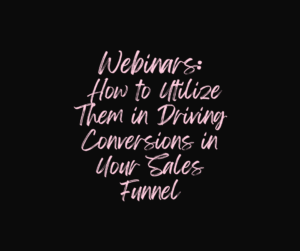SEO Essentials : Keyword Research
When it comes to optimizing your website for search engines, it all starts with understanding the language of your target audience and the SEO essentials foundation. This is where keyword research becomes paramount. In this section of our #WebsiteOptimizationBootcamp, we’ll delve deep into the world of keyword research, the cornerstone of effective SEO.
Understanding Keywords
Keywords are the words and phrases that users type into search engines when looking for information, products, or services. They are the bridge that connects your content to your audience. For example, if you’re a bakery in New York City, relevant keywords might include “NYC bakery,” “fresh pastries,” or “artisan bread in NYC.”

Why Keyword Research Matters
Keyword research is essential because it allows you to:
- Know Your Audience: By understanding the keywords your audience uses, you gain insight into their needs and preferences.
- Optimize Content: You can strategically incorporate these keywords into your content, making it more relevant to search queries.
- Outrank Competitors: Identifying less competitive keywords in your niche can give you a competitive edge in search engine rankings.
- Drive Targeted Traffic: Targeted keywords attract visitors genuinely interested in your offerings, increasing the likelihood of conversions.
How to Conduct Keyword Research
- Identify Seed Keywords: Start with a few broad keywords related to your industry or business. These are your seed keywords.
- Use Keyword Research Tools: Employ keyword research tools like Google’s Keyword Planner, SEMrush, or Ahrefs to expand your list of keywords. These tools provide data on search volume, competition, and related keywords.
- Analyze Competitor Keywords: Study the keywords that your competitors are targeting. This can provide insights and inspiration for your own keyword strategy.
- Consider Long-Tail Keywords: Long-tail keywords are longer and more specific phrases. While they may have lower search volume, they often convert better because they match the user’s precise intent.
- Evaluate Search Intent: Understand the intent behind specific keywords. Are users looking for information, products, or services? Tailor your content accordingly.
- Organize Keywords: Group your keywords by relevance and search intent. This will help you create targeted content for each keyword group.
SEO Essentials: Optimizing On-Page Content
Once you’ve identified your target keywords, the next step is to optimize your on-page content. Here’s how:
- Meta Titles and Descriptions: Incorporate your primary keyword into the meta title and description of each page. These are the elements that appear in search engine results and influence click-through rates.
- Headers and Subheaders: Use headers (H1, H2, H3, etc.) to structure your content. Include keywords in headers to indicate content relevance.
- Content Body: Naturally incorporate keywords throughout your content. Avoid keyword stuffing, which can harm your SEO.
- Image Alt Text: Optimize image alt text with descriptive keywords. This not only improves SEO but also enhances accessibility.
- Internal and External Links: Include internal links to other relevant pages on your website and external links to authoritative sources.
- Mobile Optimization: Ensure that your website and content are mobile-friendly. Google gives preference to mobile-responsive websites in search rankings.
SEO Essentials: Monitor and Adjust
Keyword research is an ongoing process. As your business evolves and user behavior changes, so should your keyword strategy. Regularly monitor your website’s performance in search rankings and adjust your keyword targeting as needed.
In the next part of our #WebsiteOptimizationBootcamp, we’ll dive into on-page optimization, exploring how to make your content SEO-friendly to improve your website’s visibility in search engine results.
Stay tuned for more insights and practical tips to elevate your SEO game.















